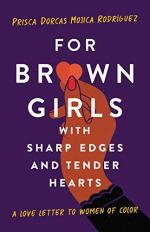|
This section contains 1,268 words (approx. 4 pages at 400 words per page) |

|
Summary
In Chapter 7, “Intersectionality,” Rodríguez writes to Brown girls who identify as “hairy girls” (137). She describes the ways in which beauty standards are founded in white standards of beauty, and are thus a form of oppression “due to racism” and “sexism” (139). It took Rodríguez many years to realize she inhabited a range of identities and selves. She did not always understand that “the universal, representative human experience” did not include her (140).
Rodríguez argues that the same is true “of mainstream feminism” (141). Just as the universal experience is white and male, feminism is “white and elite” (141). She therefore identifies body hair as “a unifier for BIWOC” (142). Women have been taught that being feminine means being white and hairless. BIWOC have learned to be ashamed “of the color of [their] skin” (143). Resisting these beauty standards is a way to redefine feminism. Rodríguez...
(read more from the Chapters 7 - 8 Summary)
|
This section contains 1,268 words (approx. 4 pages at 400 words per page) |

|




